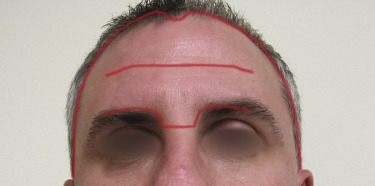Learn all about tarsorrhaphy meaning, indications, procedure and its types. There are many options for restoring eyelid closure in patients with facial paralysis. One treatment option, though not as common as it once was, is known as tarsorrhaphy. Tarsorrhaphy is a surgical procedure in which the eyelids are sewn together partially in order to decrease the size of the opening.
Tarsorrhaphies may be temporary or permanent; in the latter case, raw tarsal edges are created to form a lasting adhesion. They may be total or partial, depending on whether all or only a portion of the palpebral fissure is occluded.
Tarsorrhaphy may be done due to paralysis or weakness of the eyelids so that they cannot close or blink adequately. Bell’s palsy is a nerve condition that weakens the muscles of the face, including the eyelids. It is usually temporary. Myasthenia gravis also weakens facial muscles, but it is usually treatable. A stroke can also weaken eyelids so that they do not close.
Tarsorrhaphy is an outpatient procedure with minimal risk. The recovery period is short and there is little pain involved. It is important to avoid touching or rubbing the eye, as well as wearing makeup, until advised by your doctor. It will also take time to adjust to the limited peripheral vision, which means activities like driving should be avoided until given approval.
People of all ages can suffer from paralysis or corneal diseases that may benefit from tarsorrhaphy. For that reason, physicians can perform tarsorrhaphy on patients of any age. However, it is viewed as a last alternative for many patients, and is not indicated until after other treatments (e.g., patching and eye ointments) have been attempted.
What is Tarsorrhaphy?
Tarsorrhaphy is a procedure in which your eyelids are partially sewn together, narrowing your eye opening. Your eyelids protect the eye from injury and also help cleanse the eye and keep it moist. There are many conditions that can affect these functions and endanger your eye, specifically the cornea. The cornea is the clear window in the front of the eye.
Tarsorrhaphy Meaning
Tarsorrhaphy means an operation to diminish the size of the opening between eyelids when enlarged by surrounding cicatrices.
Tarsorrhaphy Indications
Central tarsorrhaphies are generally a temporary measure to treat non-healing epithelial defects and neurotrophic ulcers. They may also be required in critically ill, intubated patients with lagophthalmos. Aggressive lubrication and moisture chambers are typically used as primary interventions, but tarsorrhaphy becomes necessary with evidence of progressive exposure keratitis. Lateral tarsorrhaphies are used to reduce ocular surface evaporation by narrowing the horizontal palpebral aperture. They may be used in patients with facial nerve palsies or other pathologies expected to result in long-term exposure-related problems. Some indications for tarsorrhaphy are:
- Severe, recalcitrant keratopathy, persistent epithelial defect, or corneal thinning resulting from:
- Neurogenic exposure keratopathy (Cranial Nerve (CN) VII palsy)
- Neurotrophic corneal ulceration (CN V deficit, herpes simplex virus (HSV) or varicella zoster virus (VZV) keratitis)
- Severe keratitis sicca
- Progressive corneal thinning or descemetocele
- Limbal stem cell deficiency
- Eyelid abnormalities (e.g., trauma, previous eyelid surgery, cicatricial disease, ectropion and floppy eyelid syndrome)
- Exposure (thyroid eye disease, orbital tumors)
Tarsorrhaphy Procedure
The procedure is performed by carefully stitching the corners of the eyelids together to narrow the opening of the eye. Doing so keeps the cornea from being too exposed, thus giving it vital protection. Additionally, the procedure keeps the eyes lubricated by reducing its exposure to the air.
There are now several methods used to perform tarsorrhaphy. These include the use of:
- Cyanoacrylate glue – The lids may be joined simply by gluing them together using a substance known as cyanoacrylate glue.
- Botulinum toxin – Although more expensive, this effectively freezes the facial muscles near the affected eye.
- Suturing techniques
- Pressure patching
- Drawstring technique – Used mainly in cases where only a temporary effect is needed, this technique allows the eyes to close and open with ease.
- Traditionally, when the conventional suturing method is used, its effects last between two and eight weeks, giving doctors sufficient time to examine and treat the underlying condition. After 8 weeks, all sutures will lose their original tension. If the patient’s condition requires long-term effects, a permanent tarsorrhaphy can be performed, in which a part of the lid margin undergoes debridement to keep the lids sealed or narrowed.
Tarsorrhaphy Types
Tarsorrhaphy has three types:
- Simple Suture tarsorrhaphy
- Permanent tarsorrhaphy: A permanent lateral tarsorrhaphy that leaves the central lids open, allowing the patient to see and the eye to be examined.
- Reversible margin annealing tarsorrhaphy.
 Health & Care Information
Health & Care Information 


